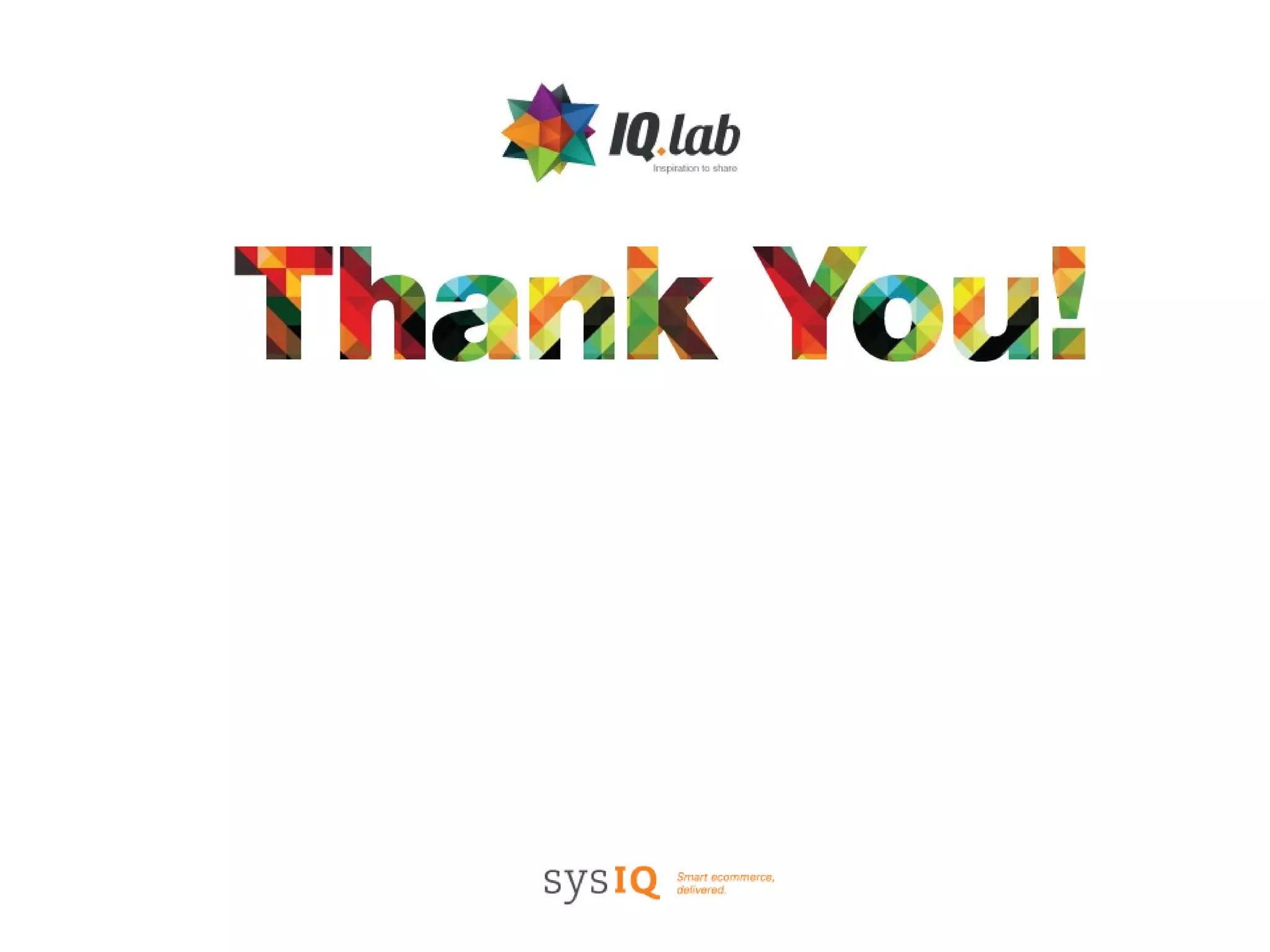Java annotations allow metadata to be added to Java code elements like classes, methods, and fields. This metadata can be read by tools and libraries to affect how the code is processed. Common built-in annotations include @Deprecated, @Override, and @SuppressWarnings. Annotations can also be applied to other annotations to specify how they function, such as their retention policy or valid targets. As an example, the document describes how to build a simple annotation-based test framework using the @Test annotation to mark test methods.

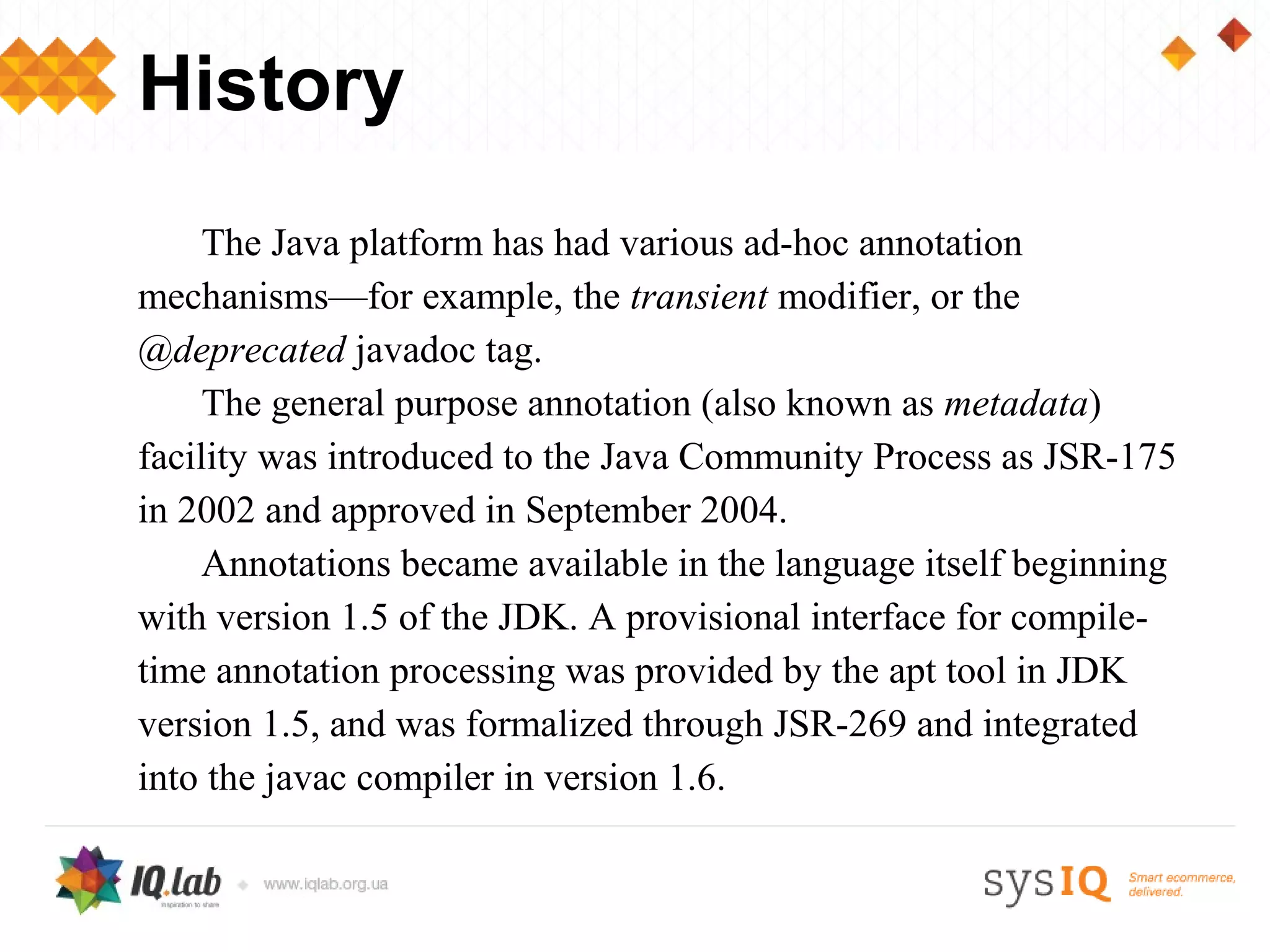
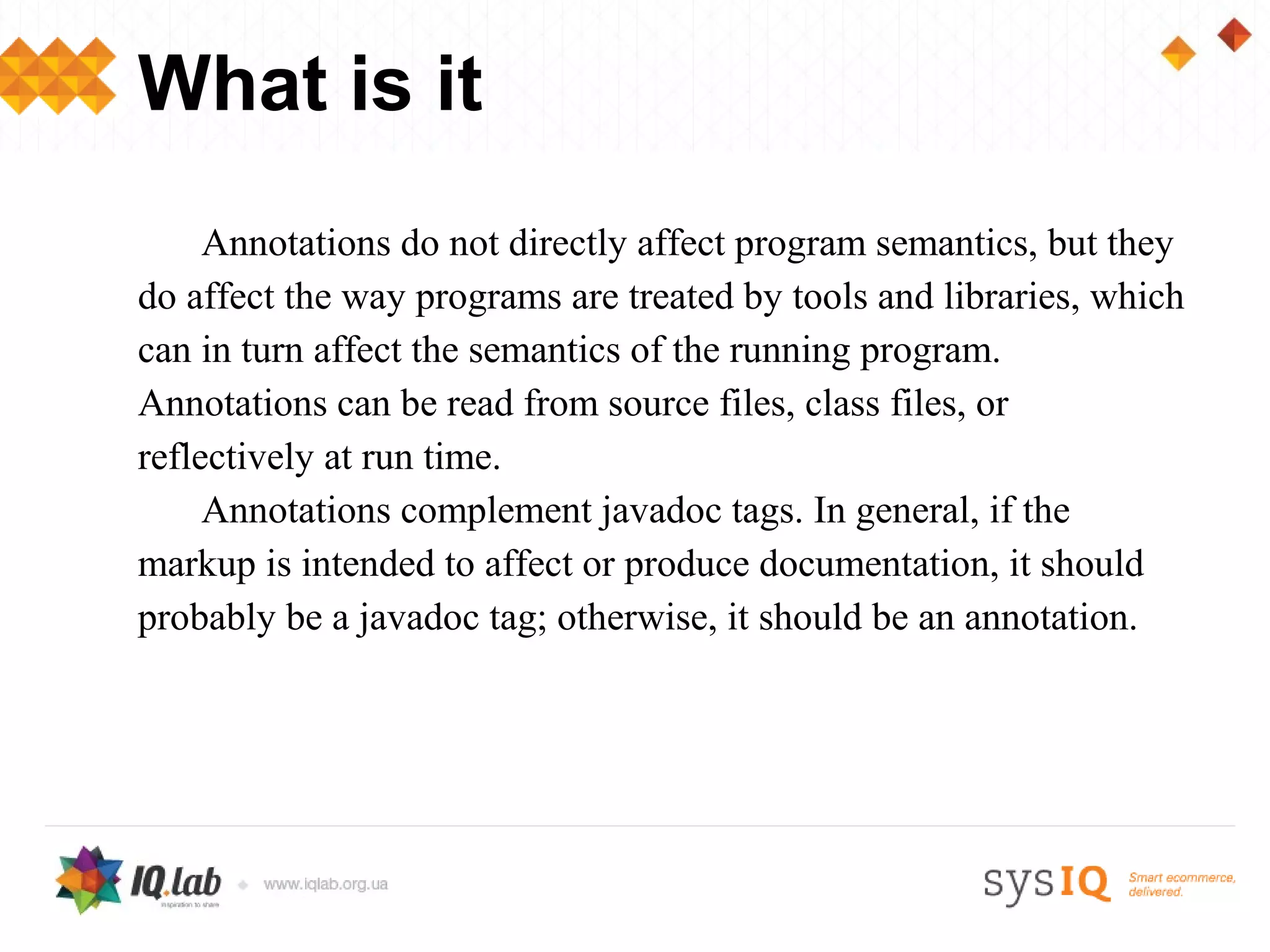
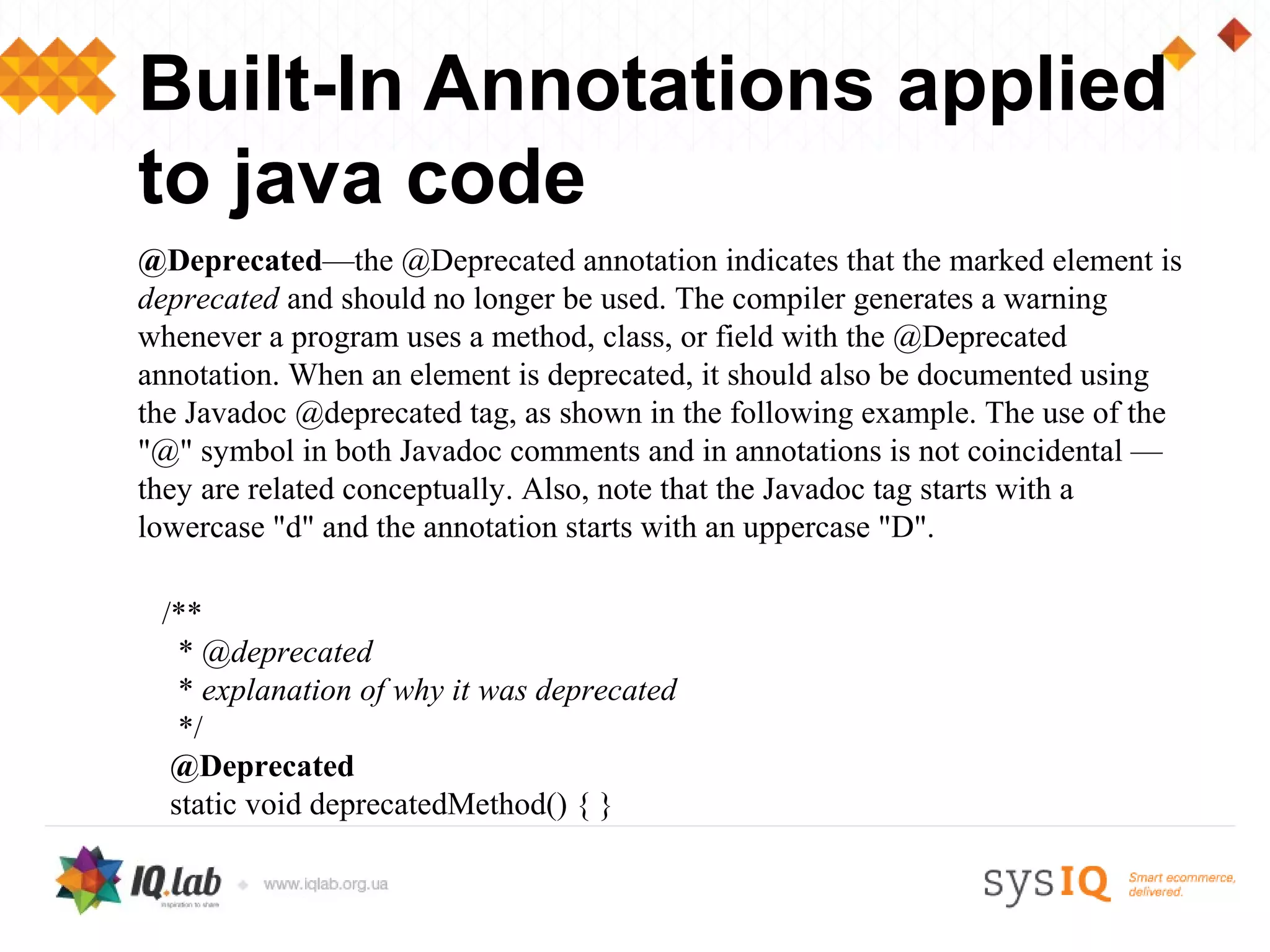
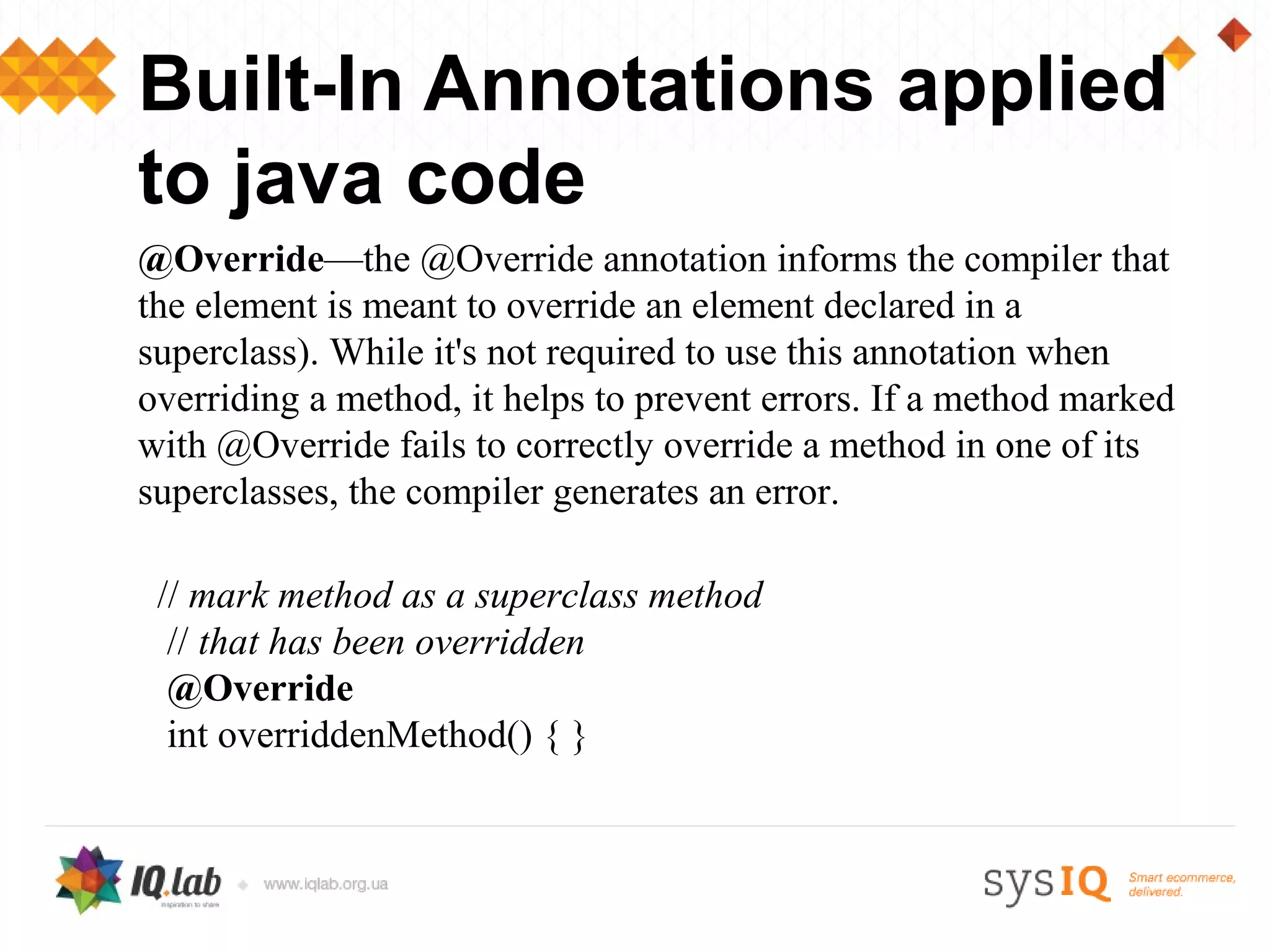
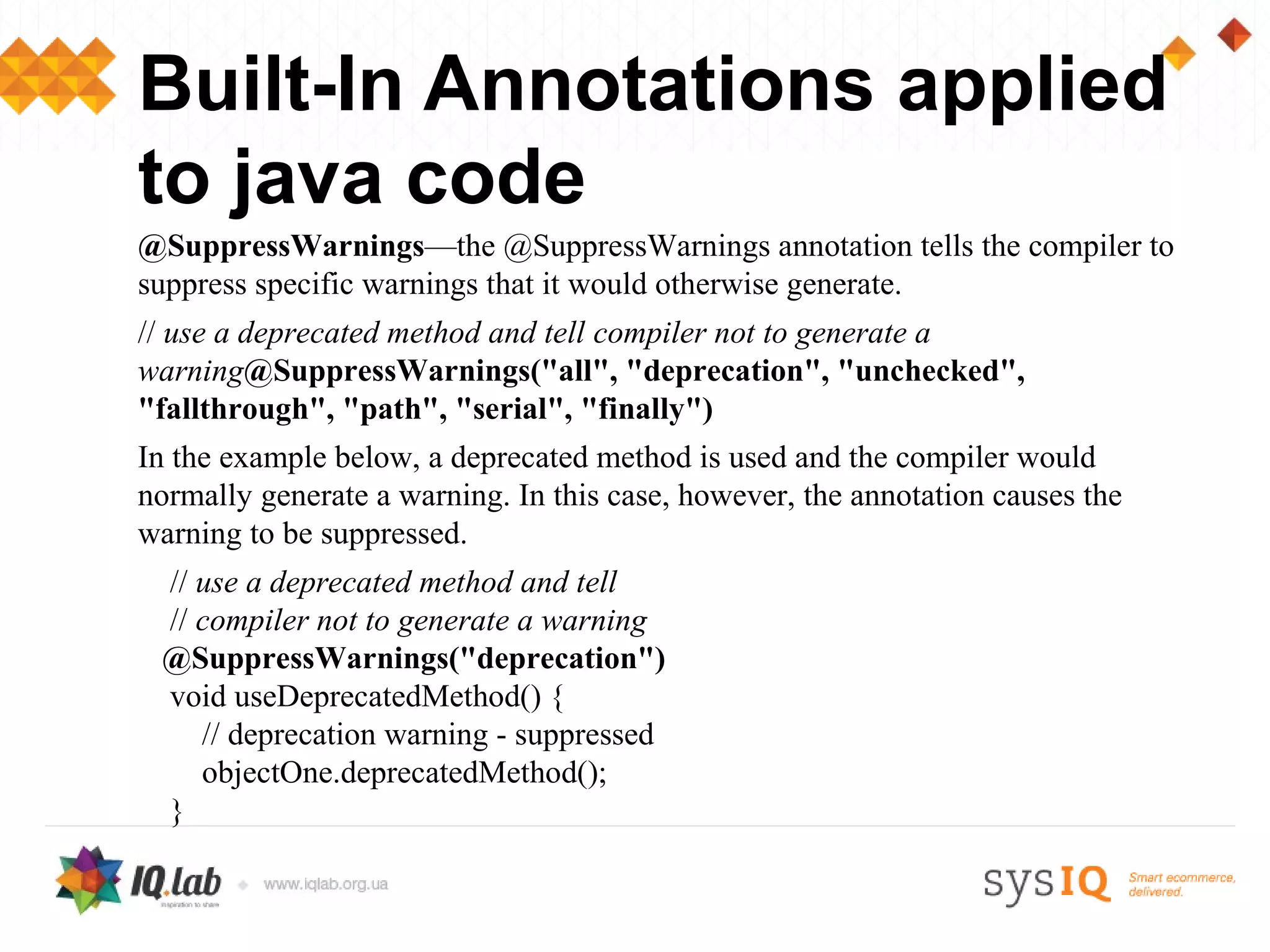
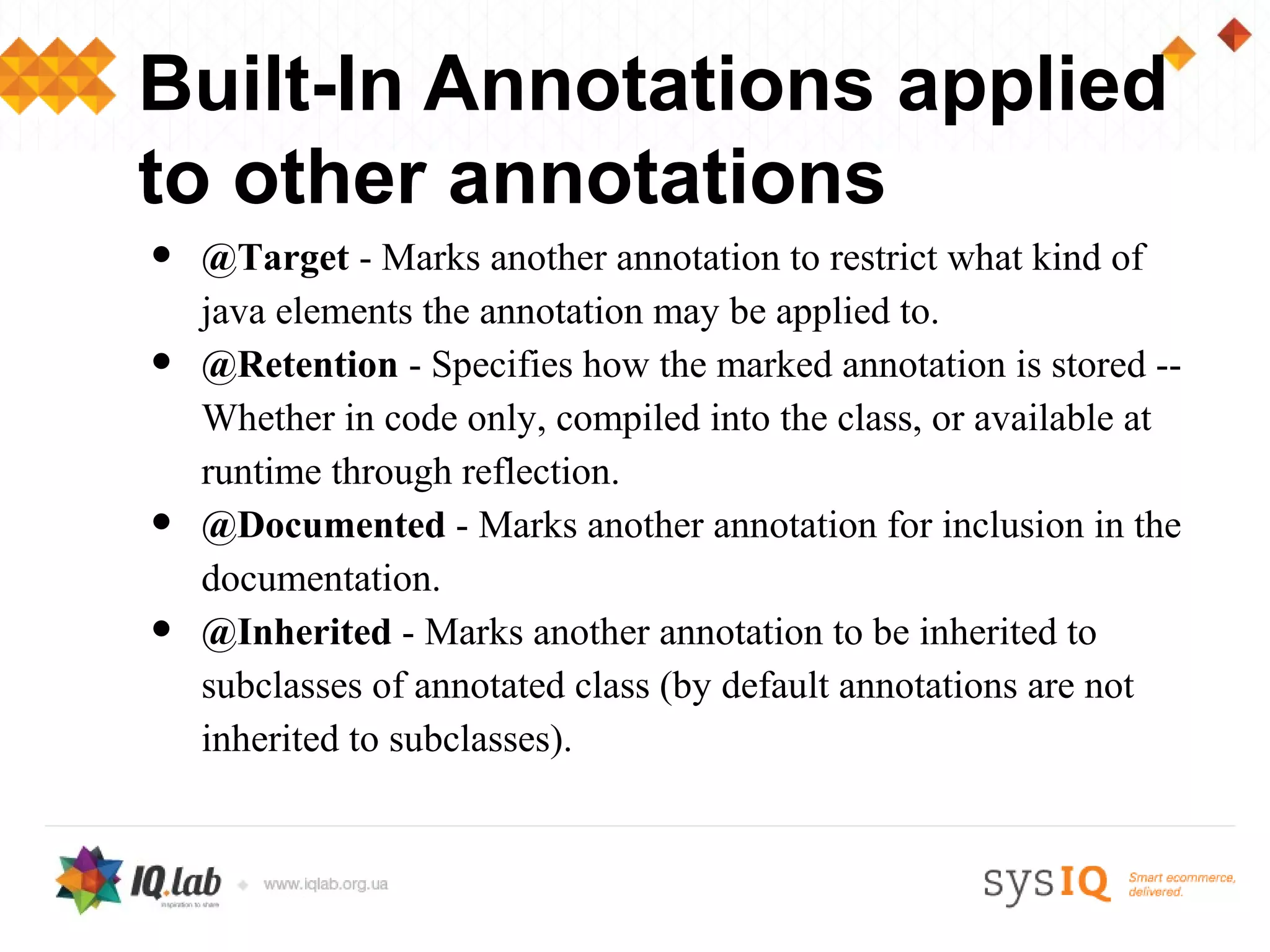
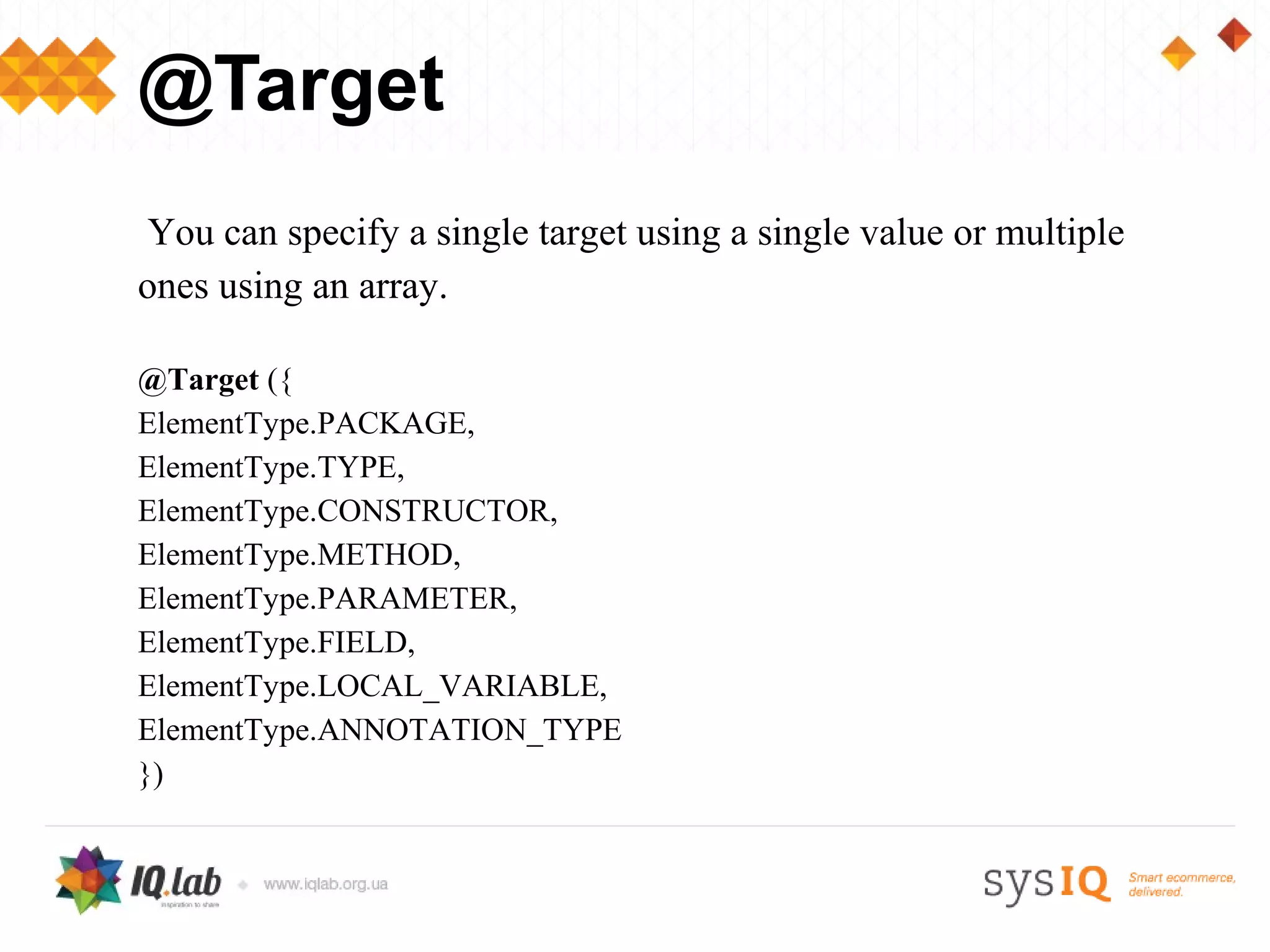
![@RetentionPolicy
• RetentionPolicy.SOURCE retains an annotation only in
the source file and discards it during compilation.
• RetentionPolicy.CLASS stores the annotation in the .class
file but does not make it available during runtime.
• RetentionPolicy.RUNTIME stores the annotation in the
.class file and also makes it available during runtime.
@Retention(RetentionPolicy.RUNTIME)
@Target(ElementType.TYPE)
public @interface TryThis {
String [] value();
}](https://image.slidesharecdn.com/javaannotations-java-fusion-iqlab-sysiq-120810081524-phpapp01/75/Understanding-Annotations-in-Java-9-2048.jpg)
![Annotation attributes
Return types are restricted to primitives, String, Class, enums, annotations, and
arrays of the preceding types. Methods can have default values.
Here is an example annotation type declaration:
/**
* Describes the Request-For-Enhancement(RFE) that led
* to the presence of the annotated API element.
*/
public @interface RequestForEnhancement {
int id();
String synopsis();
String engineer() default "[unassigned]";
String date(); default "[unimplemented]";
String[] text();
}](https://image.slidesharecdn.com/javaannotations-java-fusion-iqlab-sysiq-120810081524-phpapp01/75/Understanding-Annotations-in-Java-10-2048.jpg)
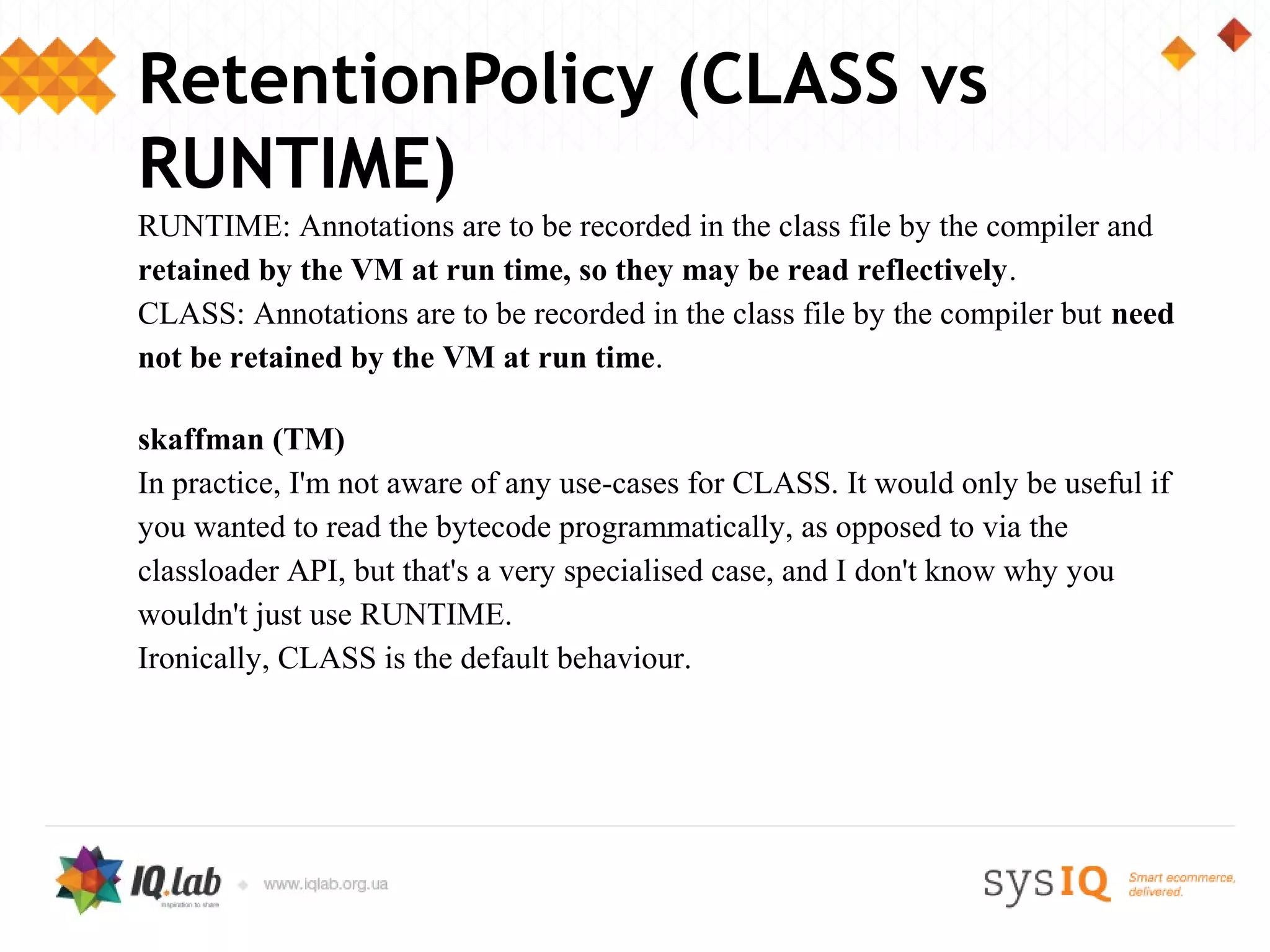
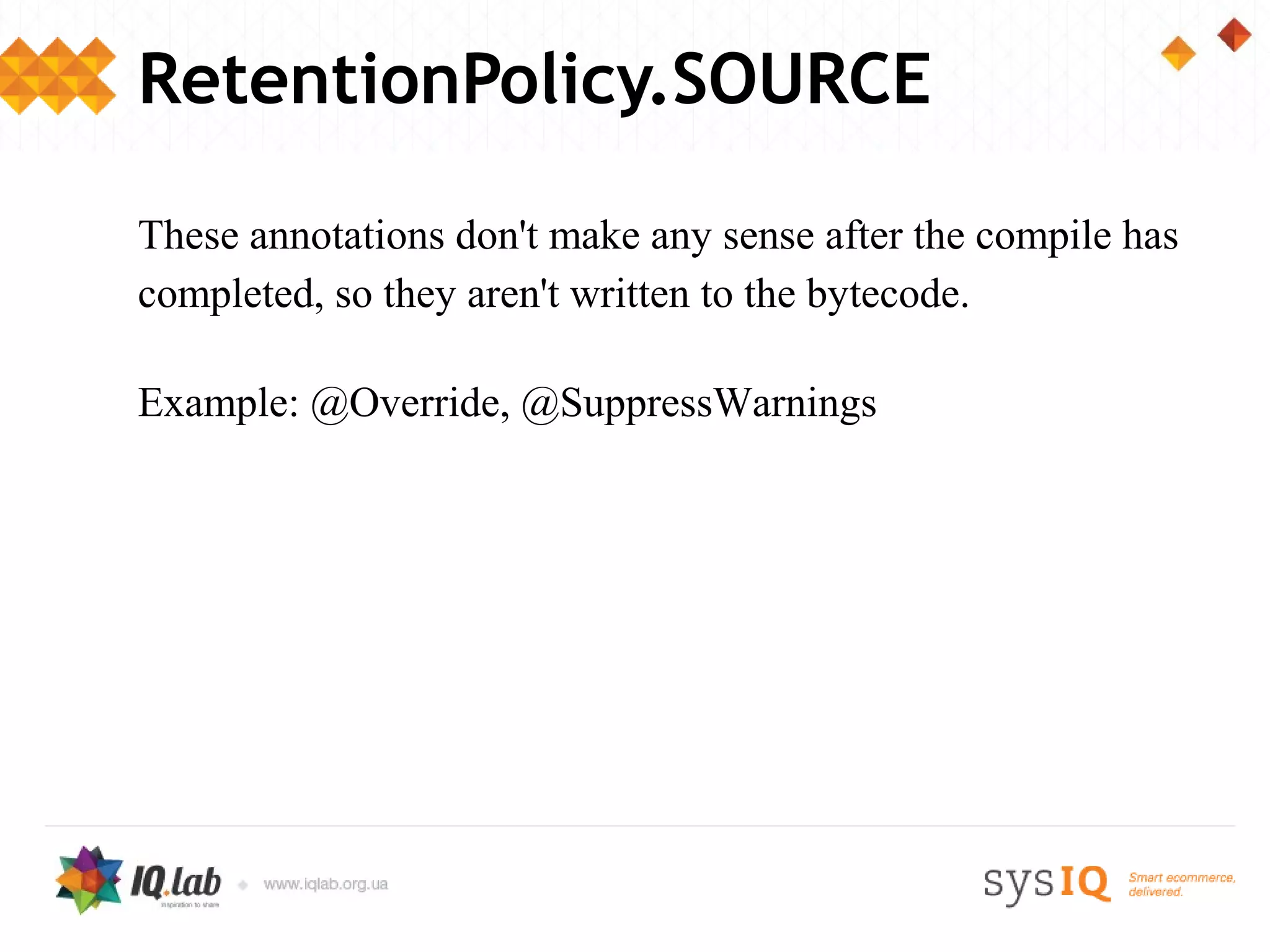
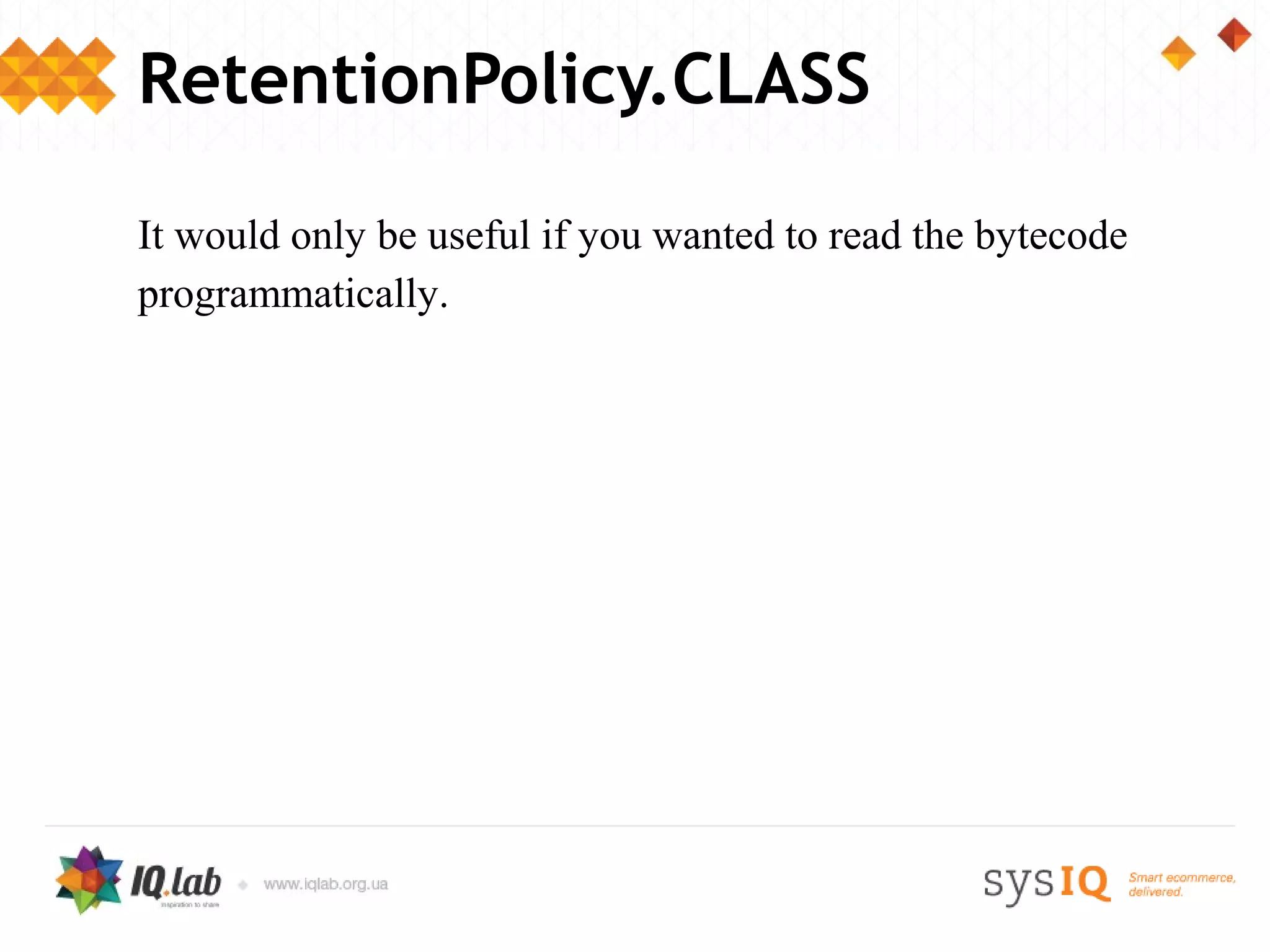
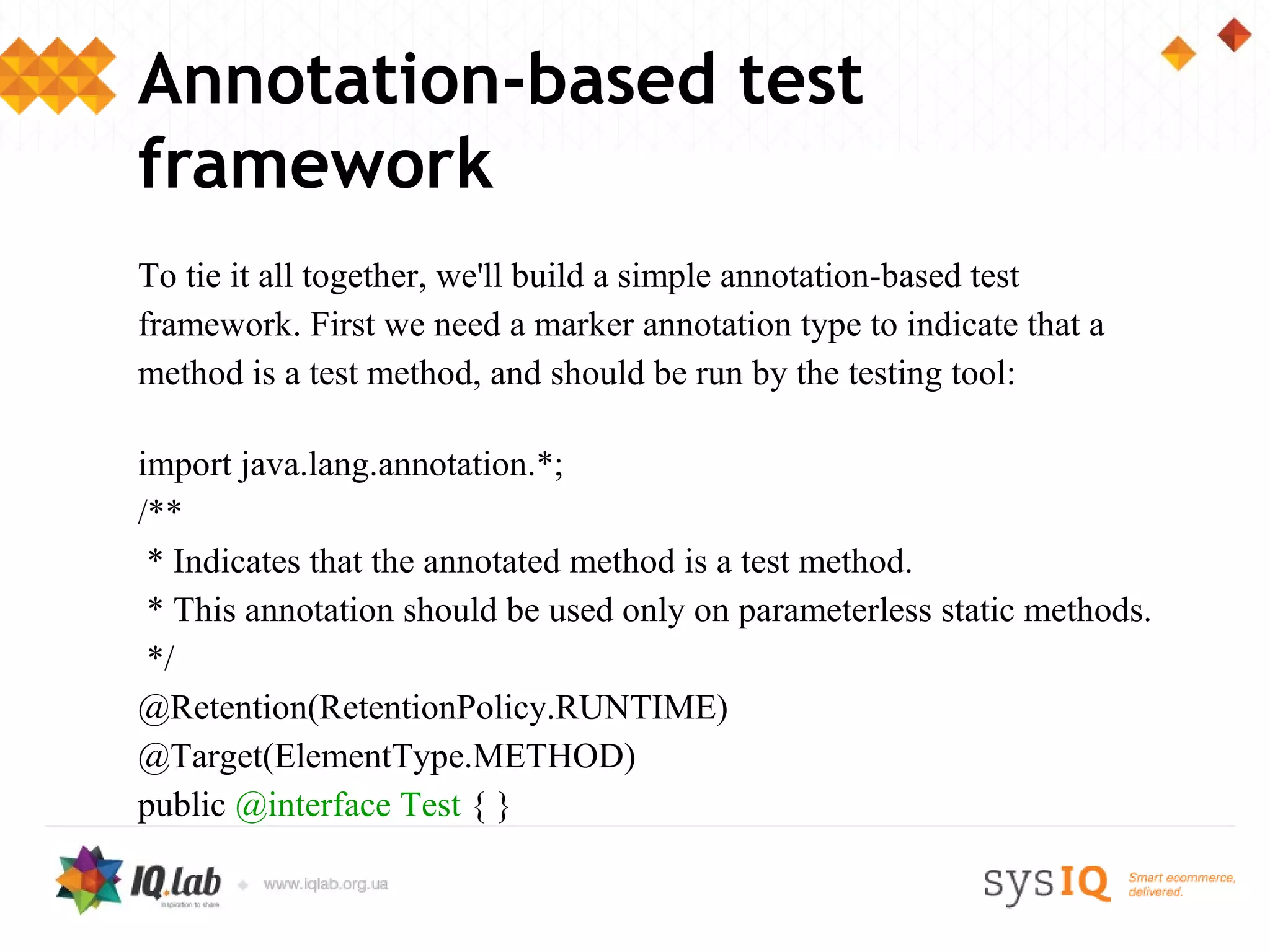
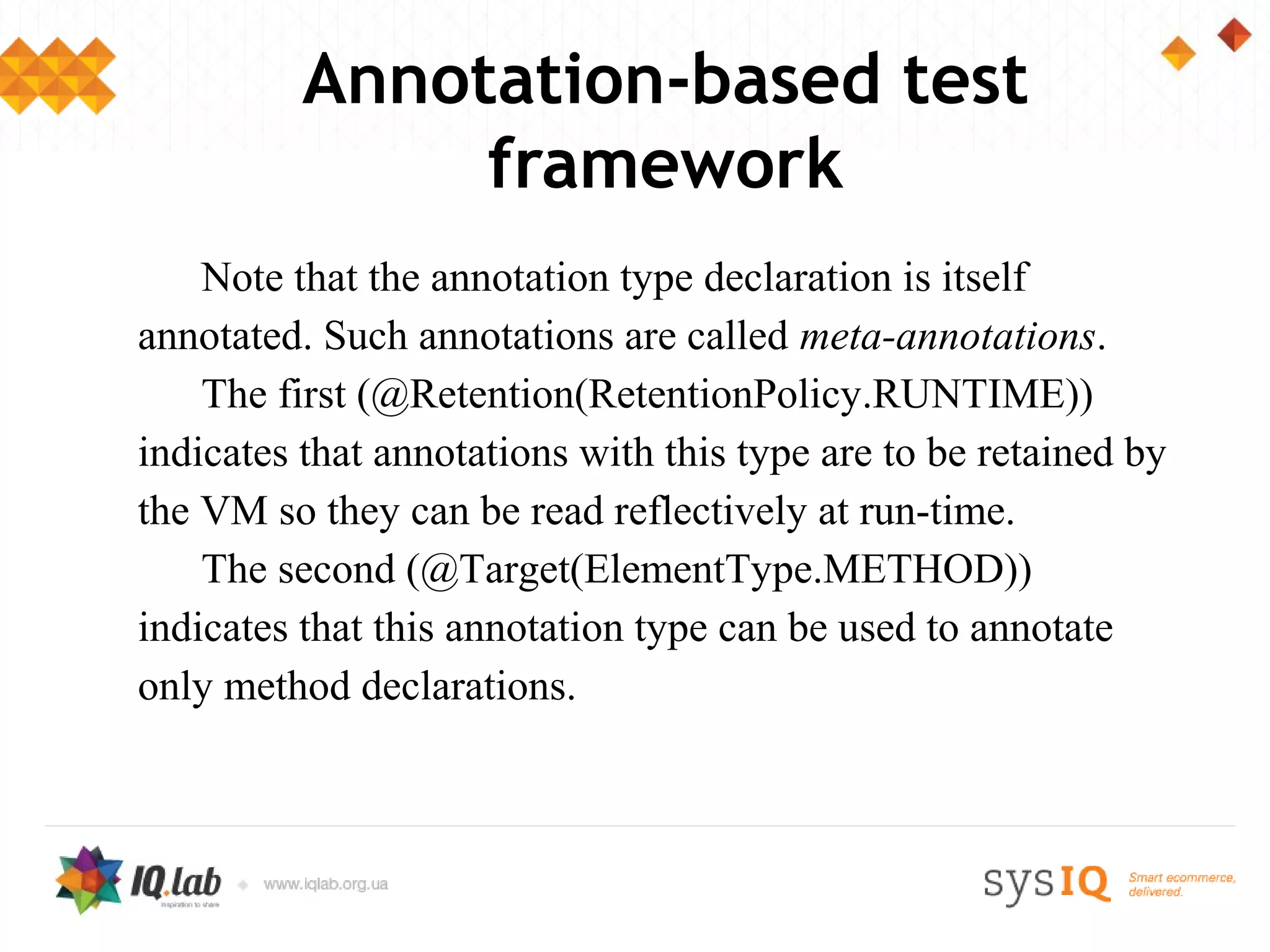
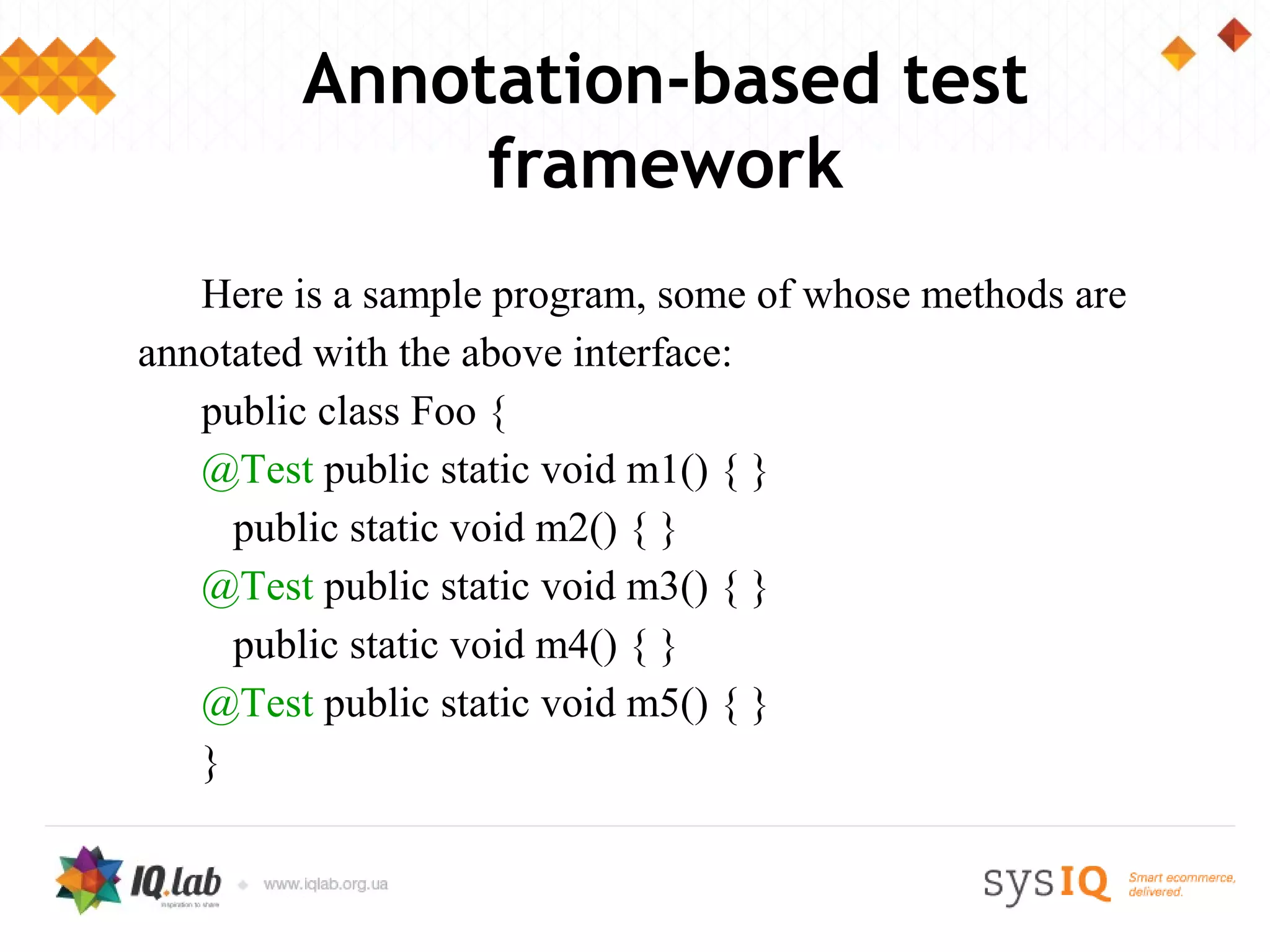
![Annotation-based test
framework
import java.lang.reflect.*;
public class RunTests {
public static void main(String[] args) throws Exception {
int passed = 0, failed = 0;
for (Method m : Class.forName(args[0]).getMethods()) {
if (m.isAnnotationPresent(Test.class)) {
try {
m.invoke(null);
passed++;
} catch (Throwable ex) {
System.out.printf("Test %s failed: %s %n", m, ex.getCause());
failed++;
}
}
}
System.out.printf("Passed: %d, Failed %d%n", passed, failed);
}](https://image.slidesharecdn.com/javaannotations-java-fusion-iqlab-sysiq-120810081524-phpapp01/75/Understanding-Annotations-in-Java-17-2048.jpg)
